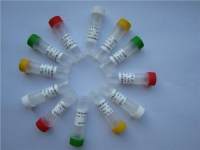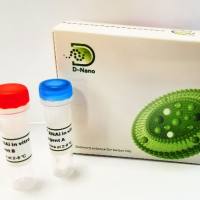In Vitro Translation Extracts from Tissue Culture Cells
互联网
410
The in vitro translation system provides an important means of identifying mRNA species of a gene of interest, characterizing the protein products, and investigating translational control. Rabbit reticulocyte lysate (RRL) or wheat germ lysate have been used to successfully translate protein in response to mRNAs from a variety of species including mammals, plants and phage (1 ,2 ). The translation of viral mRNA in cell-free extracts is one of the most powerful tools available for elucidation of virus-specific translational control. The RNA genomes of some viruses including poliovirus are not capped, having instead a long noncoding region at their 5′ end. The translation of such viral mRNAs is initiated by entry of the ribosome within the noncoding region in a cap-independent manner; the site is called the internal ribosome entry site, IRES (3 ). Poliovirus is not translated in a cell-free translation system prepared from wheat germ, and is translated inefficiently, and usually incorrectly, in RRL. However, poliovirus mRNA is translated efficiently in HeLa cell S10 extract, and in RRL upon adding HeLa cell S100 extract (see Note 1 ) (4 –7 ). The cellular factors necessary for poliovirus translation are present in sufficient amounts in HeLa cell S10 extract but not in RRL. Thus, the in vitro system is useful for identification of the factors necessary for poliovirus cap independent translation, such as the La protein (8 ), poly (rC) binding protein 1 (PCBP 1), and PCBP2 (9 ,10 ).









